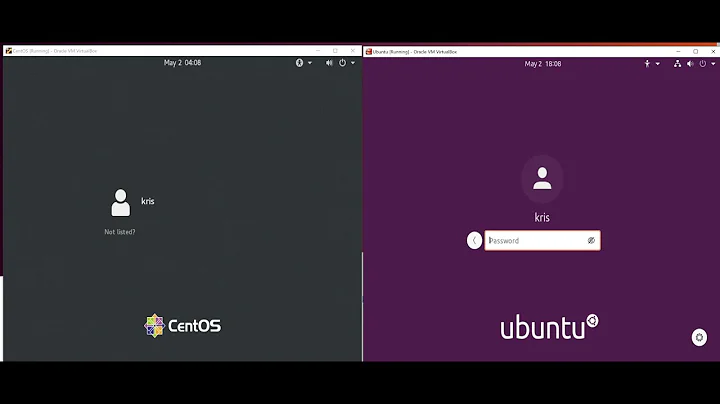Which CentOS Version Should I Use?
Solution 1
I would always recommend that new projects start out with the latest available OS version, unless there's some overriding need to not do so.
The big stumbling block you may run into is that EL7 cut out a lot of drivers for older hardware, and since you propose to use some rather old hardware here, you may find that you can't install the operating system. In that case you would have to use EL6 (or upgrade the hardware).
In particular, that G5 server probably has a SmartArray 400 in it, which used the old cciss driver, which was cut from EL7. You might be able to get it to work with the kernel boot command line option hpsa.hpsa_allow_any=1, but no guarantees. The G6 probably has a SmartArray 410, which should work with the current hpsa driver.
The monitoring and management agents provided by HP and Dell also might not be available for EL7 for the particular hardware. If you can live without these, then it's not a big deal, but they do add sufficient value that you should use them when possible.
Solution 2
I would approach this project with a CentOS 6 installation. There are a few considerations:
Within the lifecycle of the upstream Red Hat product, EL6 has just reached the maturity and stability that I require for my production environments. It's still a distribution that has access to a good package set, deep mindshare and wide usage. Plus, you always have the option of using a newer kernel atop EL6.
The server hardware you describe was engineered for use with EL5 and EL6. That includes the value-add monitoring software and agents provided by HP and Dell. Not to say that EL7 will not work, but the age of the systems and the tendency for older hardware drivers to fall out of maintenance mean that you should strive for a period correct OS.
If you were using newer hardware, I think forward compatibility would be a bigger issue. I'm personally not ready to validate EL7 as a platform, but that will change in the coming 6 months. As for today, I don't think it would be irresponsible to use EL6.
For the systems you have, Ubuntu is pretty well-supported. There aren't any problems with hardware raid on G5/G6 ProLiant-era servers or Dell's rebranded LSI storage controllers.
Related videos on Youtube
Alan
CEO ReminderDental.com. Part time dentist, full time developer. Developer in: C++, C#, PHP, HTML, CSS, Javascript Managing services in: MySQL, Apache, Ubuntu, Linux, SMS hardware and software, online video delivery with RTMP and HTML5 Setup, install and maintain servers in multiple datacenters around the country creating a independent CDN with failover to Amazon Expert in hardware and software troubleshooting. Spent 15 years in desktop support, networking, webmaster. I tend to learn anything and everything needed to get the job done. I work with very talented developers, but try to make sure I am capable of stepping in anywhere needed, as well as doing the research into product selections and initial development for many solutions prior to handing off to others.
Updated on September 18, 2022Comments
-
 Alan over 1 year
Alan over 1 yearI have some used rackmount servers (Dell R610, HP DL180 G6, HP DL360 G5) that I intend to use for on demand video streaming in a colocation environment. I would like to have them all on the same OS to make managing them simple, to have one server (HP DL180) that has lots of storage and super fast seek / transfer that will support multiple edge servers which will cache the media locally and will also have rapid seek but with less storage requirements.
I had originally been using Ubuntu but from previous feedback was told that Ubuntu won't have the same level of support for the hardware RAID as CentOS and so have been trying to switch that over on the servers.
In previous experiences with managed dedicated hosting, they would have a custom server configuration of CentOS 5 or 6 with all the little bells and whistles like
nano(I know it is super easy to install, it is just an easy thing to say it isn't part of the CentOS minimal install compared with the default from a hosting company).The software vendor for the media streaming recommends doing some kernel level optimizations, and I am curious if I should stay with CentOS 6 at this point, or go with CentOS 7? It seems version 7 is still pretty new and so not sure if I would get the same quality of support here on the forums, and since the servers aren't really that new, I imagine there aren't any hardware items that needs 7.
From a security standpoint, am I shooting myself in the foot to not start out with version 7?




